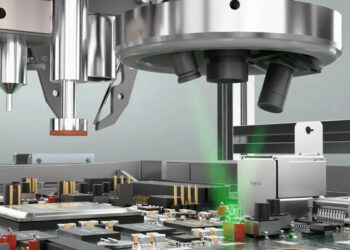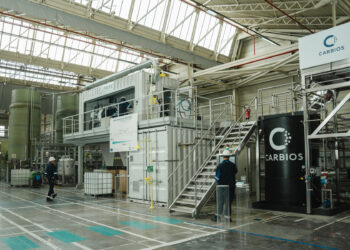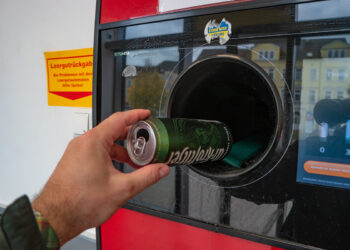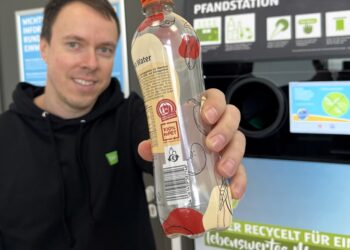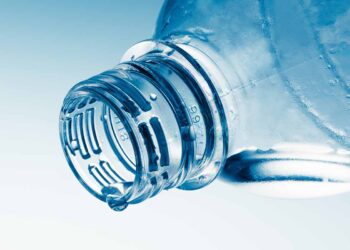A nationwide 10-cent deposit on PET beverage containers could push the recycling rate for the material to over 80% in the next decade with a high level of bottle-to-bottle circularity, a MIT study suggested.
The team of researchers used NAPCOR, U.S. EPA and The Recycling Partnership data, along with other research into recycling around the world, to examine how a national deposit return system could boost recycling. The study explored the connections between RPET supply and demand and the potential effect on MRFs if a national DRS program were to be implemented. It also touched on other recycling policies, such as extended producer responsibility and minimum recycled content mandates.
The paper, “Evaluating strategies to increase PET bottle recycling in the United States,” was published in mid-June in the Journal of Industrial Ecology. It found that current recycling rates for PET bottles nationwide are about 24%, after accounting for losses, and “have not increased in a decade.”
“Recycling rates remain abysmal while industry commitments and policy targets escalate the demand for recycled plastics,” the authors added.
However, a 10-cent deposit and a nationwide bottle deposit program could increase the recycling rate to 82% by 2035, with 68% recycled into new bottles. Currently, the bottle-to-bottle circularity rate is 11%, the report estimated.
“We adopt a supply-demand perspective to address these gaps and analyze strategies that can improve PET bottle recycling rates in the United States,” the authors wrote. “We demonstrate how expanding DRS in the United States can meet recycling and circularity targets. We also estimate the costs of expansion under various demand scenarios and inform ongoing efforts to design and implement extended producer responsibility for plastic packaging.”
The scenarios, which assumed policy-based targets of 25% recycled content by 2025, 50% by 2030 and 70% by 2035, were evaluated based on net system costs, the RPET cost gap, the circularity rate and the recycling rate.
The RPET cost gap is the difference between the average unit cost of producing RPET and the cost that consumers pay.
Under the 2035 scenario, the PET recycling rate would be 82% and the circularity rate 68%. The annual net system cost would increase from $210 million in 2018 to $920 million in 2035, but the cost per ton of PET recycled is lower, the study found, “due to economies of scale.”
The system would still require subsidies under that model, the authors noted, perhaps from government or producers under EPR, but the RPET cost gap drops from $450 per ton in 2018 to $360 per ton in 2030 and 2035. That comes to about 1 cent per bottle, on average, the study found.
However, “an important consideration in implementing DRS is the negative impact on MRFs that rely heavily on PET and aluminum bales for revenue and are vital components of the overall recycling system,” the authors cautioned.
And as not all deposits are redeemed, the study estimated that about $1 billion in unredeemed deposits would be potentially available, which would require “careful policy design” to use effectively and without “counterproductive or perverse incentives.”
“Since system costs can increase if manufacturer demand for R-PET is lower than expected, policymakers should combine a national 10c deposit on bottles with demand-side safeguards such as recycled content requirements and eco-modulated EPR fees,” the authors concluded. “DRS expansion and demand-side policies should also account for the loss of recovery value in MRFs so that impacts on the wider waste recovery value chain are appropriately compensated.”






